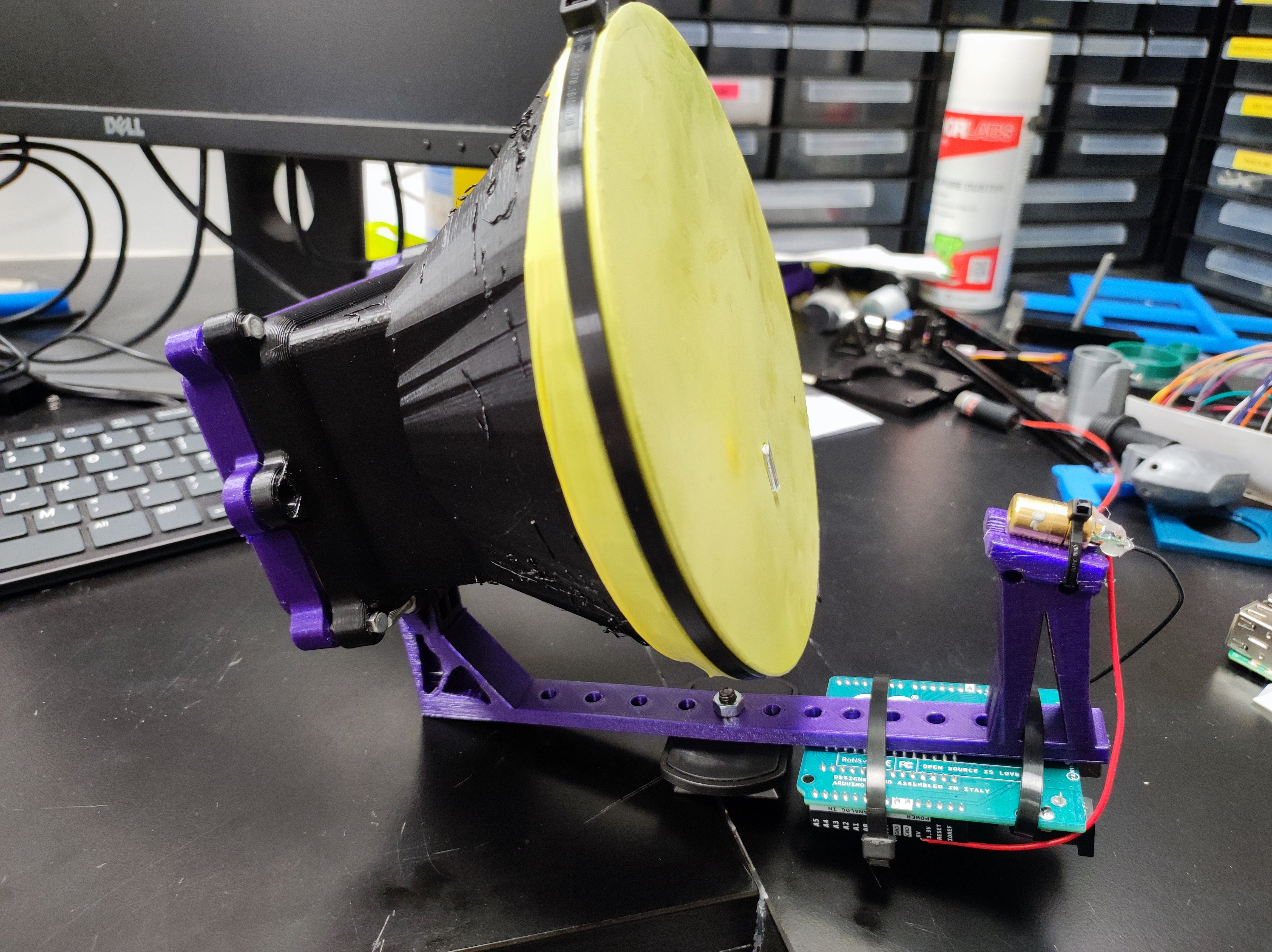
Sound reactive laser reflector (tympanic membrane movement model)
prusaprinters
<h4>Assembly.</h4><p>There are two versions. The voicecone version is open ended and works by speaking/shouting into the open end. The speaker cone version is designed for a JBL Go 2 bluetooth speaker. This model is designed to work with the rear part of the speaker housing with the GoPro mount found here: <a href="https://www.thingiverse.com/thing:4576989.">https://www.thingiverse.com/thing:4576989.</a> Both cones can be attached to the laser mount using the GoPro stye attachments (with an M5 screw and nut). The holes in the arm of the laser mount can be used for attachment (we use a tripod for this). All parts can be printed in PLA at 0.3mm layer height and work fine - higher resolutions son't seem to be required. Ours were printed with 15% infill. Infill pattern and density might affect the function, but probably only in a very minor way.</p><p>Additionally, you'll need a balloon, a small mirror, and a small pointer-style laser diode. you'll see an arduino in our photos, but we're just using this as a quick way to get 5V to our laser diode! The laser can be cable tied to the guide slot in the laser mount. Cut the top half off the balloon and stretch it over the cone (it should be tight). Secure the balloon with some cable ties or string. Activate the laser, note the point where it hits the balloon, and glue a small mirror onto the balloon. Then you're ready to go!</p><h4>Making it work.</h4><p>All you need to do is to provide sound, either through the speaker, or the human voice, depending on which cone you're using. The sound waves will cause the membrane (balloon) to move. This causes the mirror to move, which changes how the laser is reflected by the mirror. By pointing the reflected laser at a wall, you can see lines and patterns traced by the moving laser that reflect the movement of the membrane - essentially allowing you to “see” a representation of the sound.</p><p>Because this is all about changing the angles of reflection of the laser, the effect will be bigger the further away from the mirror you project the laser, but it also may become a bit dimmer. Experiment to find the perfect distance. </p><h4>Things to try</h4><p>The if you're using a speaker, check the shapes produced by different frequencies/notes, or waveforms. We've provided a few photos of examples that we got using this tone generator ( <a href="https://www.szynalski.com/tone-generator/">https://www.szynalski.com/tone-generator/</a> ). </p><p>Play different different types of music through the speaker, and see how different instruments look.</p><p>The movement of the balloon models the movement of the eardrum when you hear a sound. If you're careful, you may be able to pop a hole in the balloon to simulate a perforated eardrum. See how this movement of the laser changes - this is a nice way to demonstrate why hearing is affected by damage to the eardrum.</p><p> </p><p> </p><p> </p>
With this file you will be able to print Sound reactive laser reflector (tympanic membrane movement model) with your 3D printer. Click on the button and save the file on your computer to work, edit or customize your design. You can also find more 3D designs for printers on Sound reactive laser reflector (tympanic membrane movement model).
